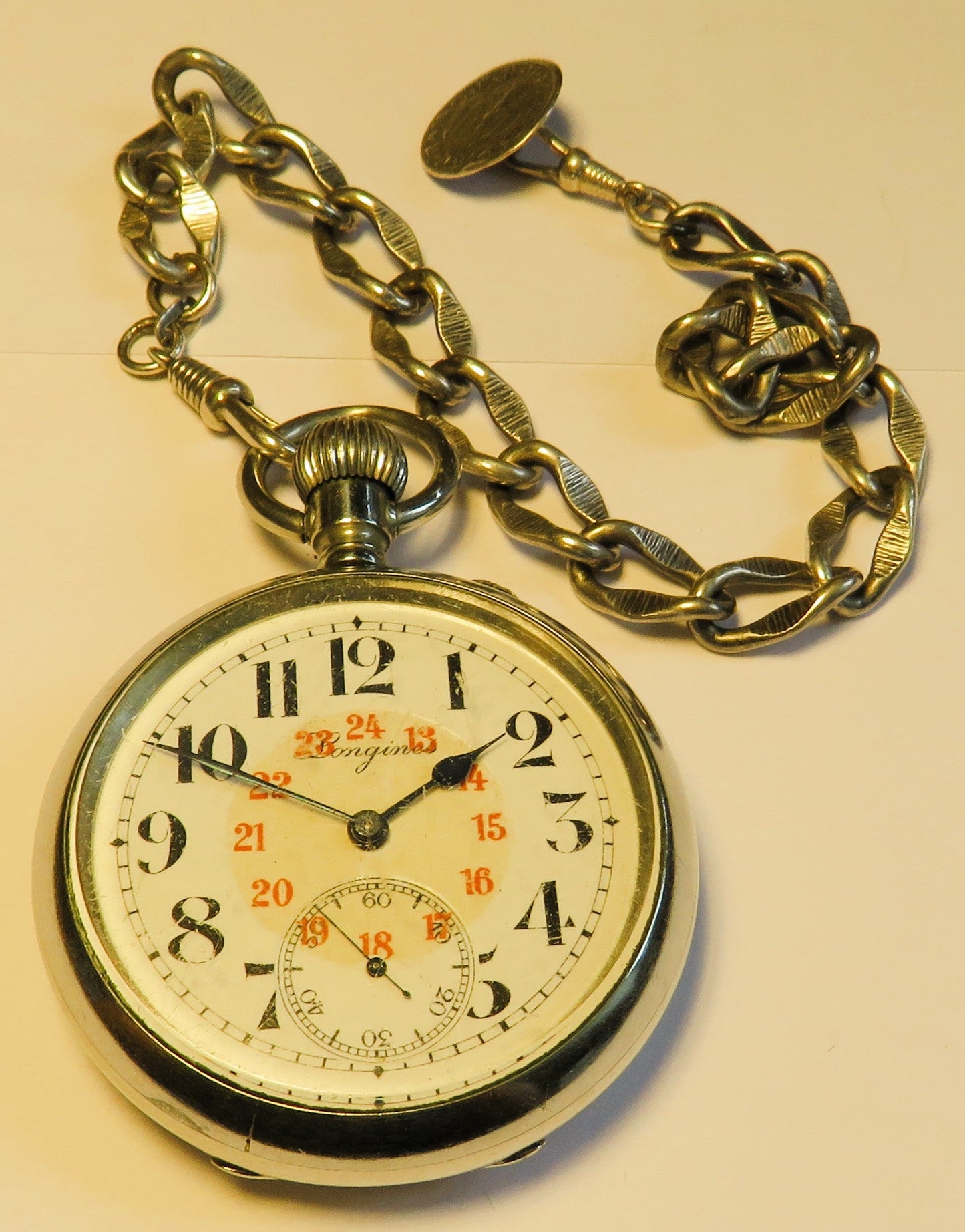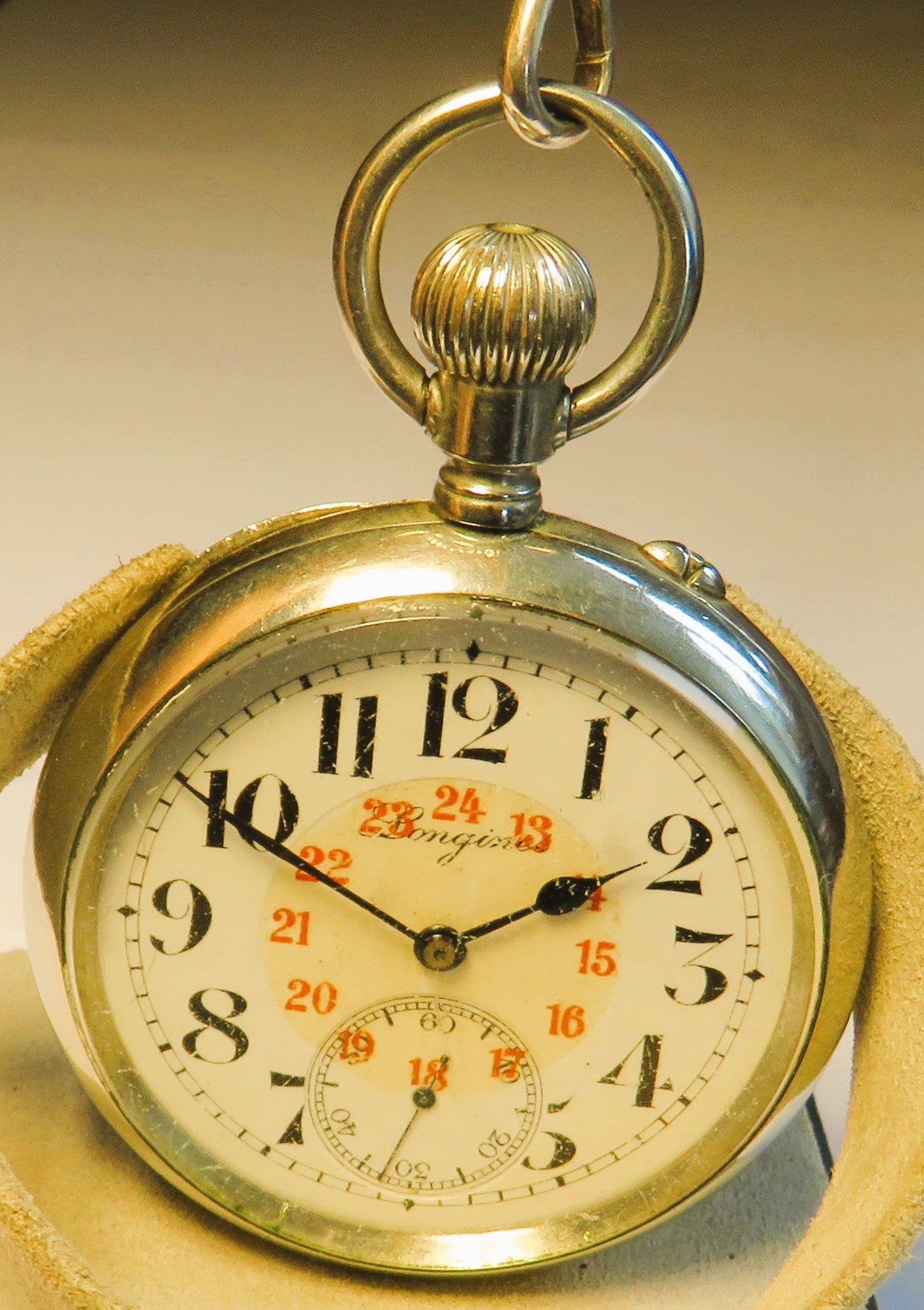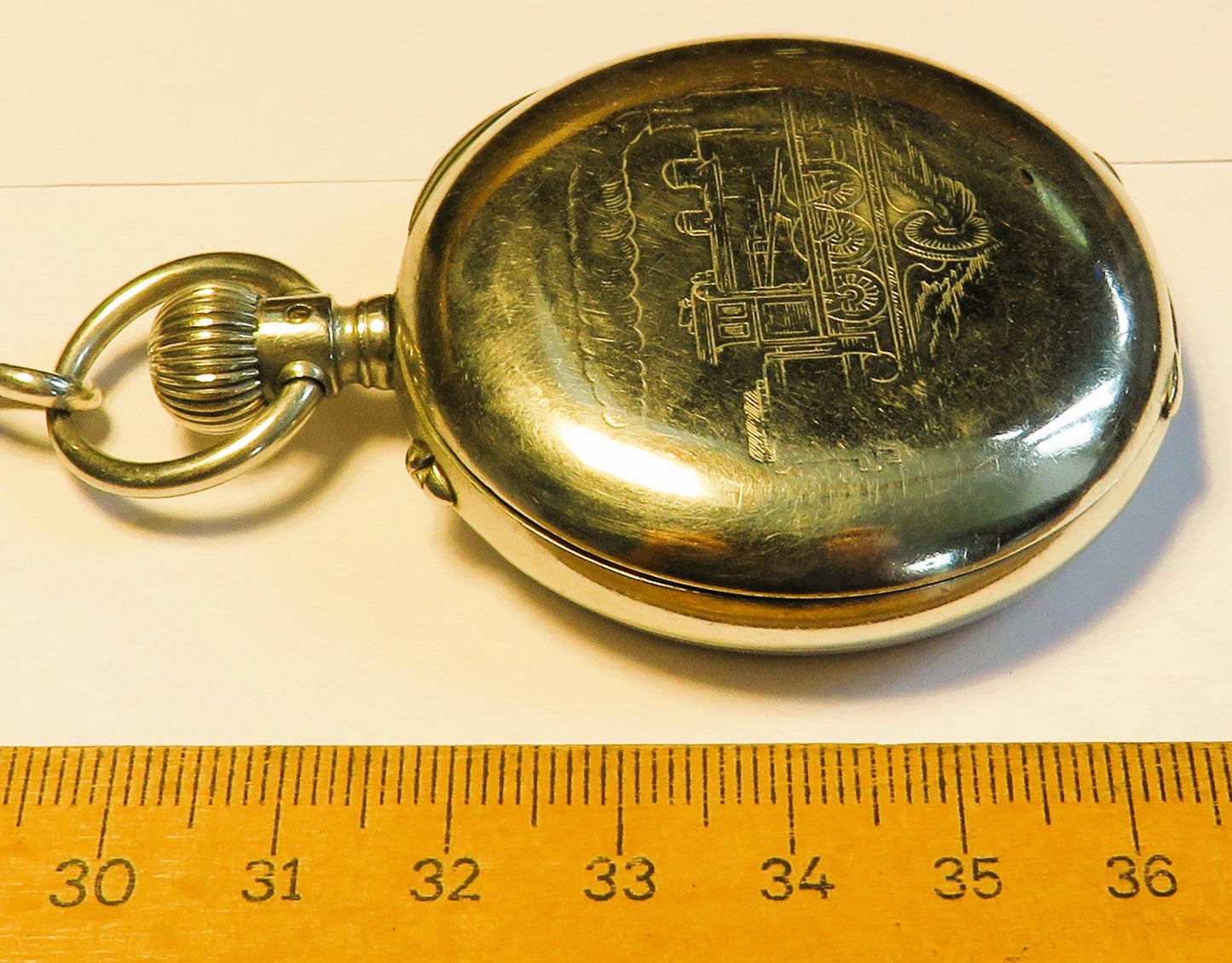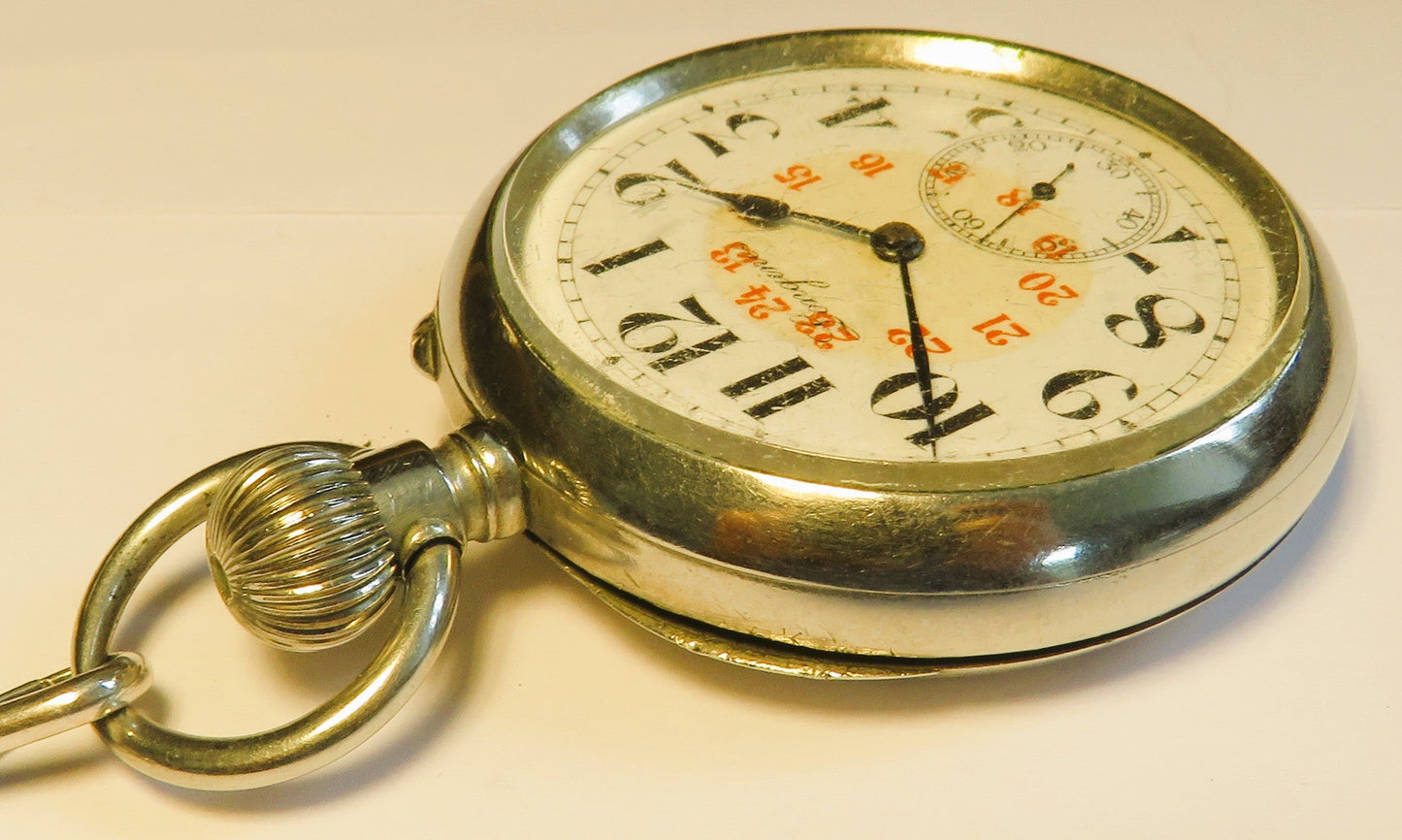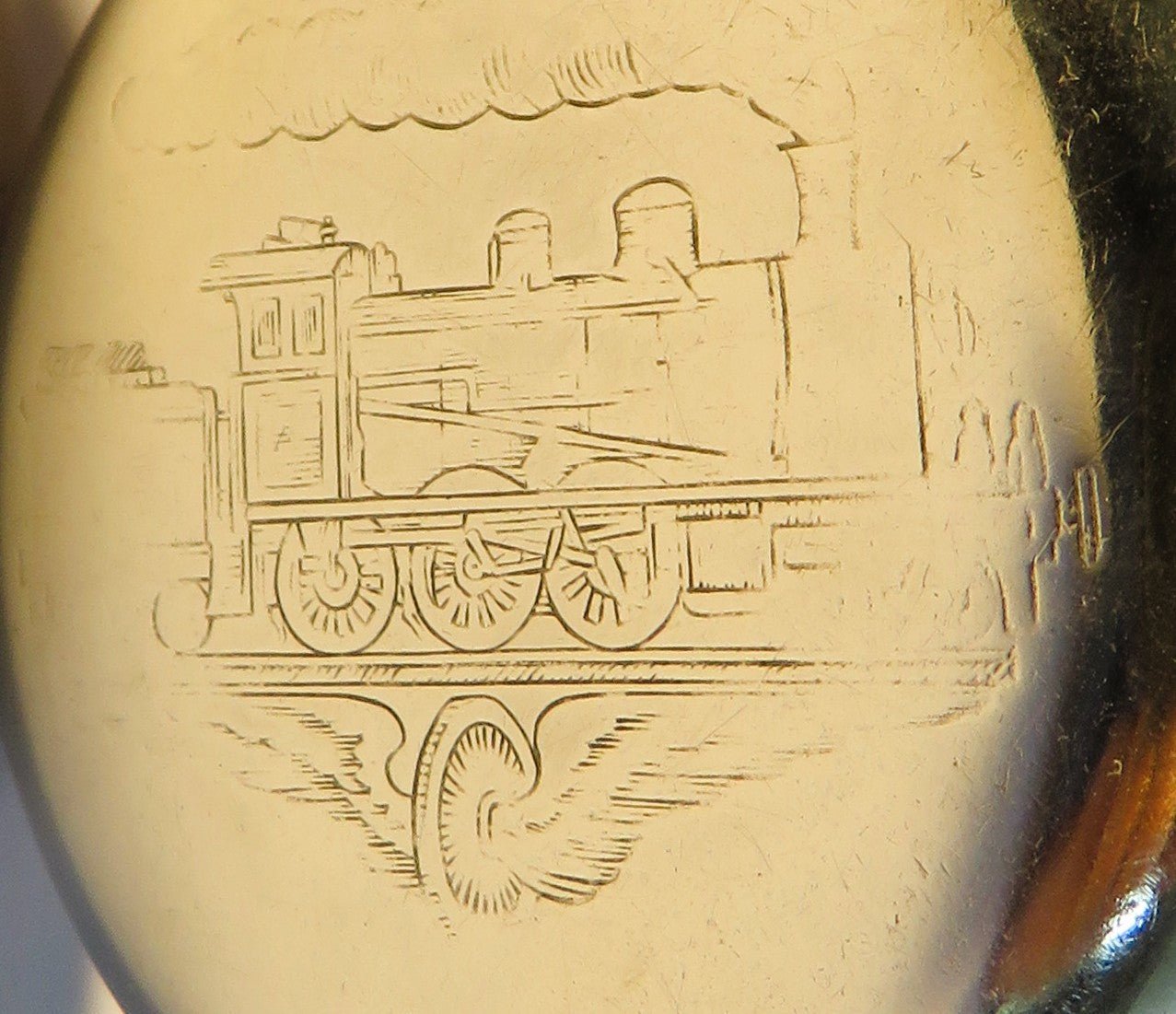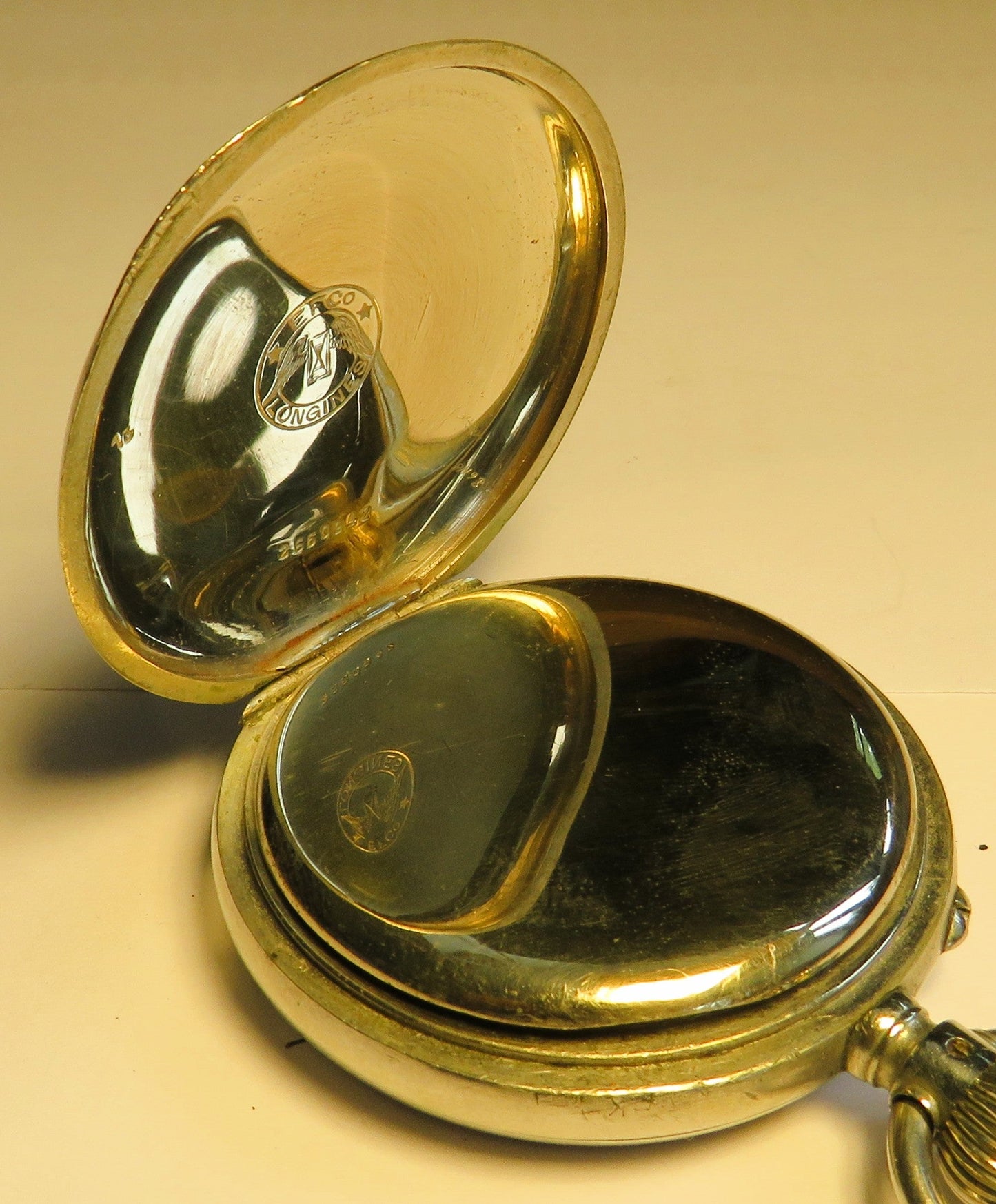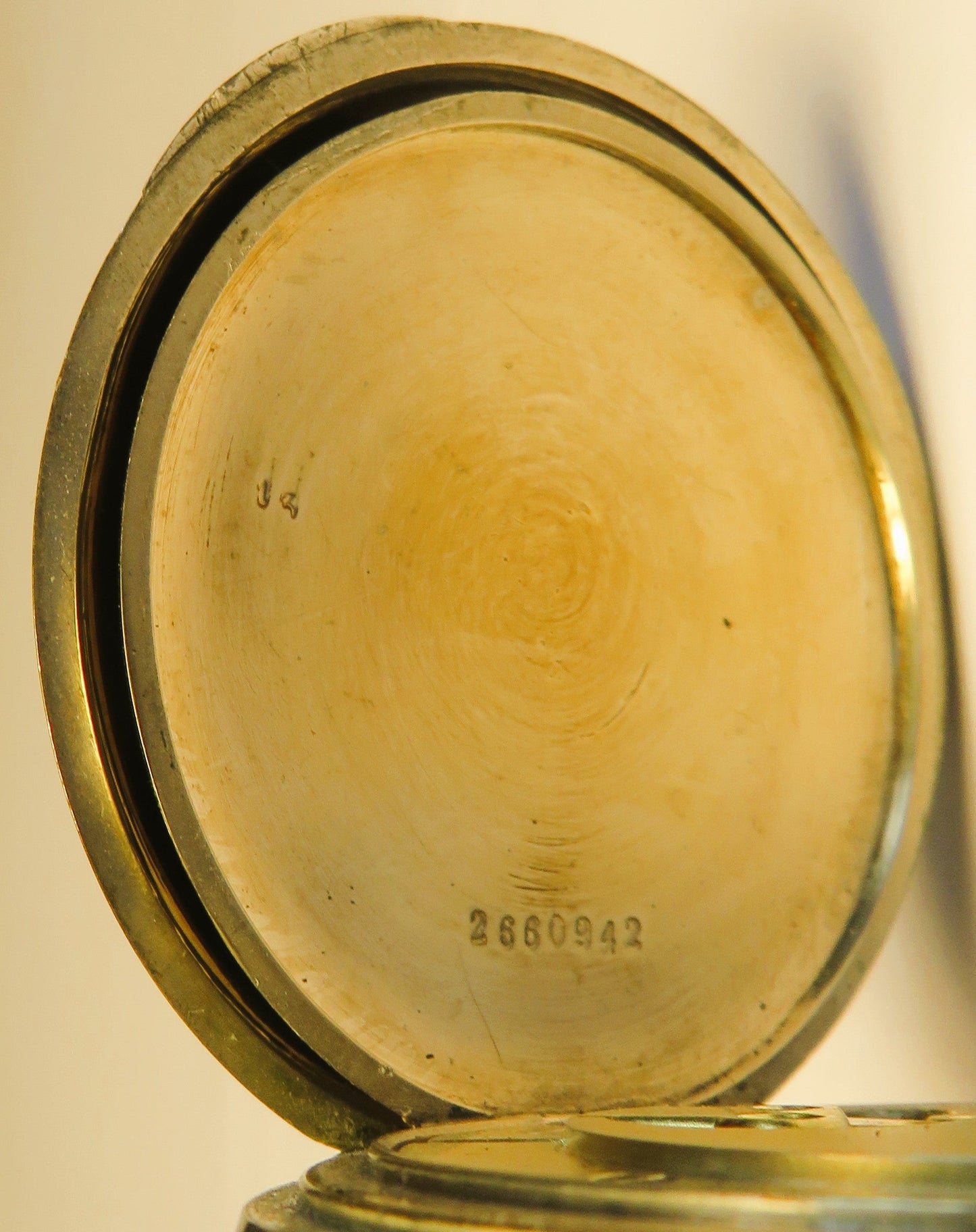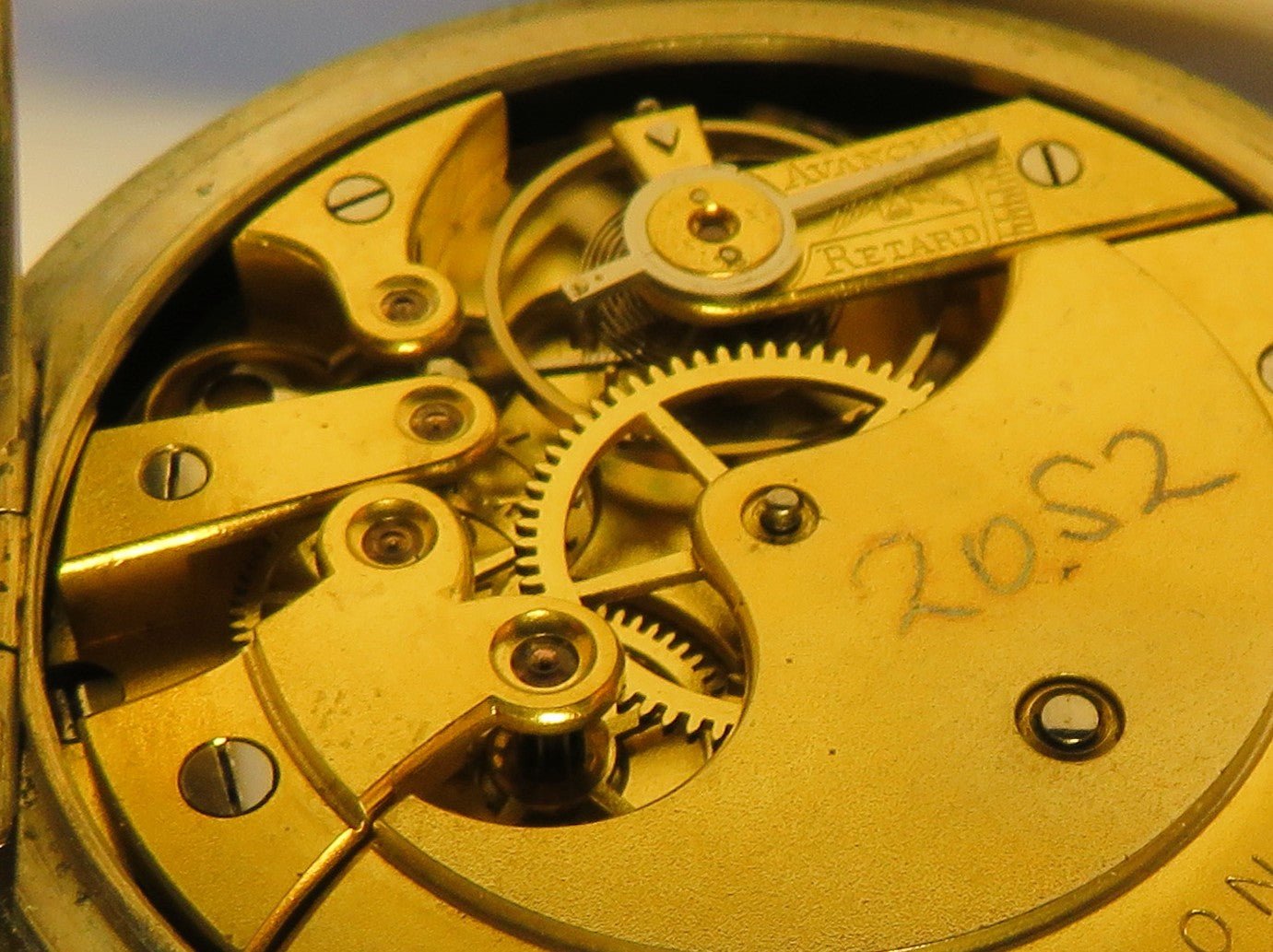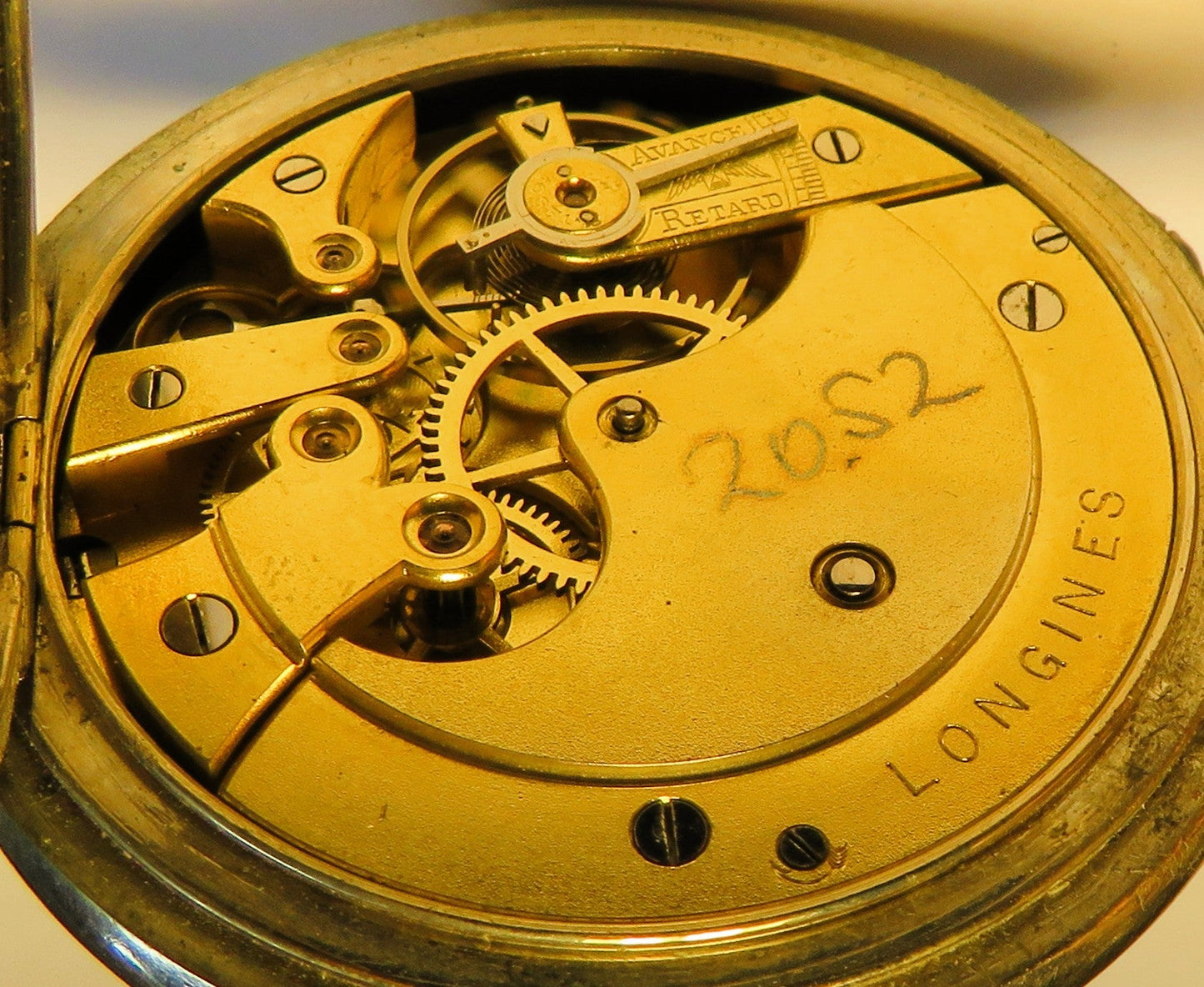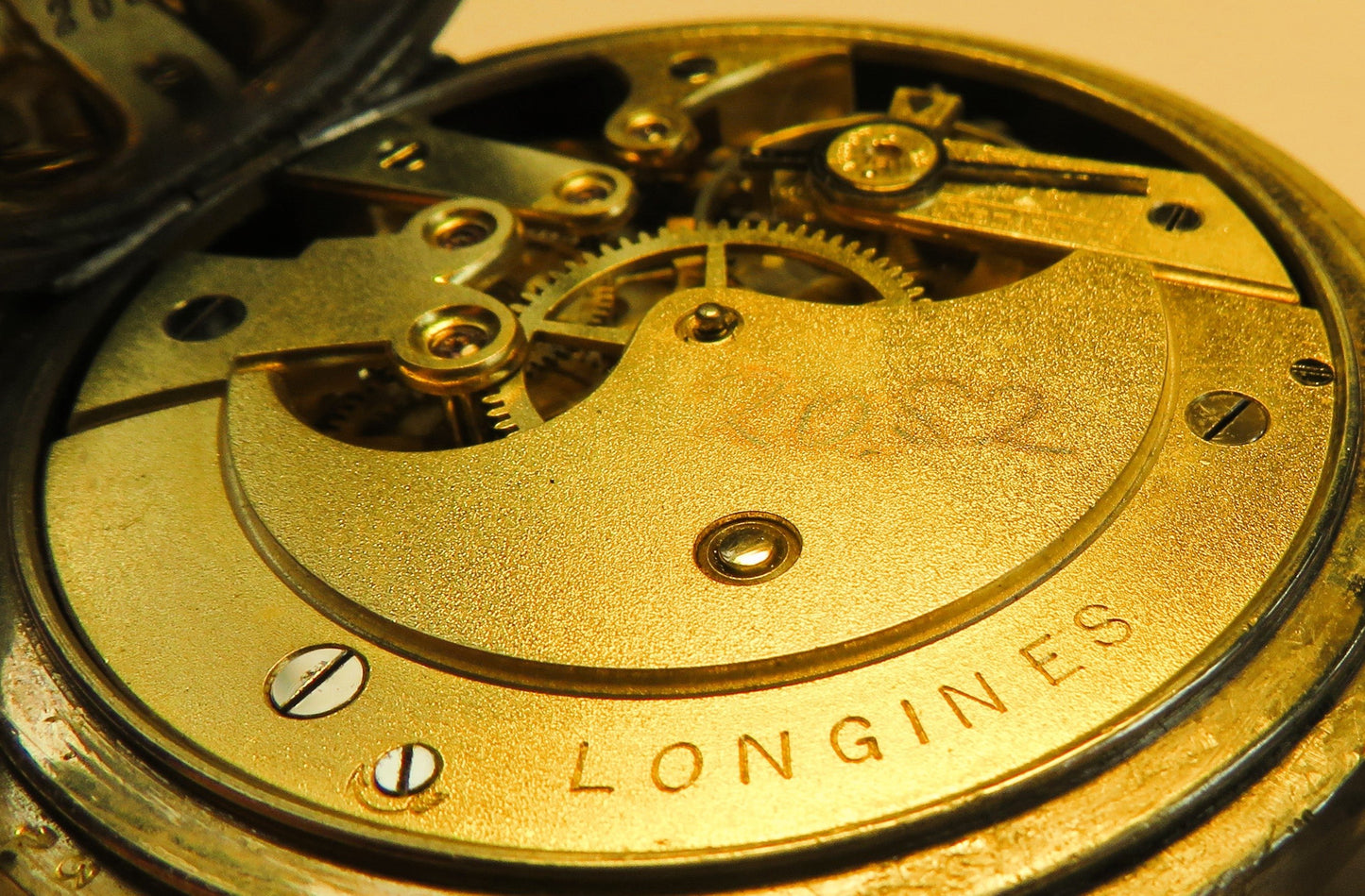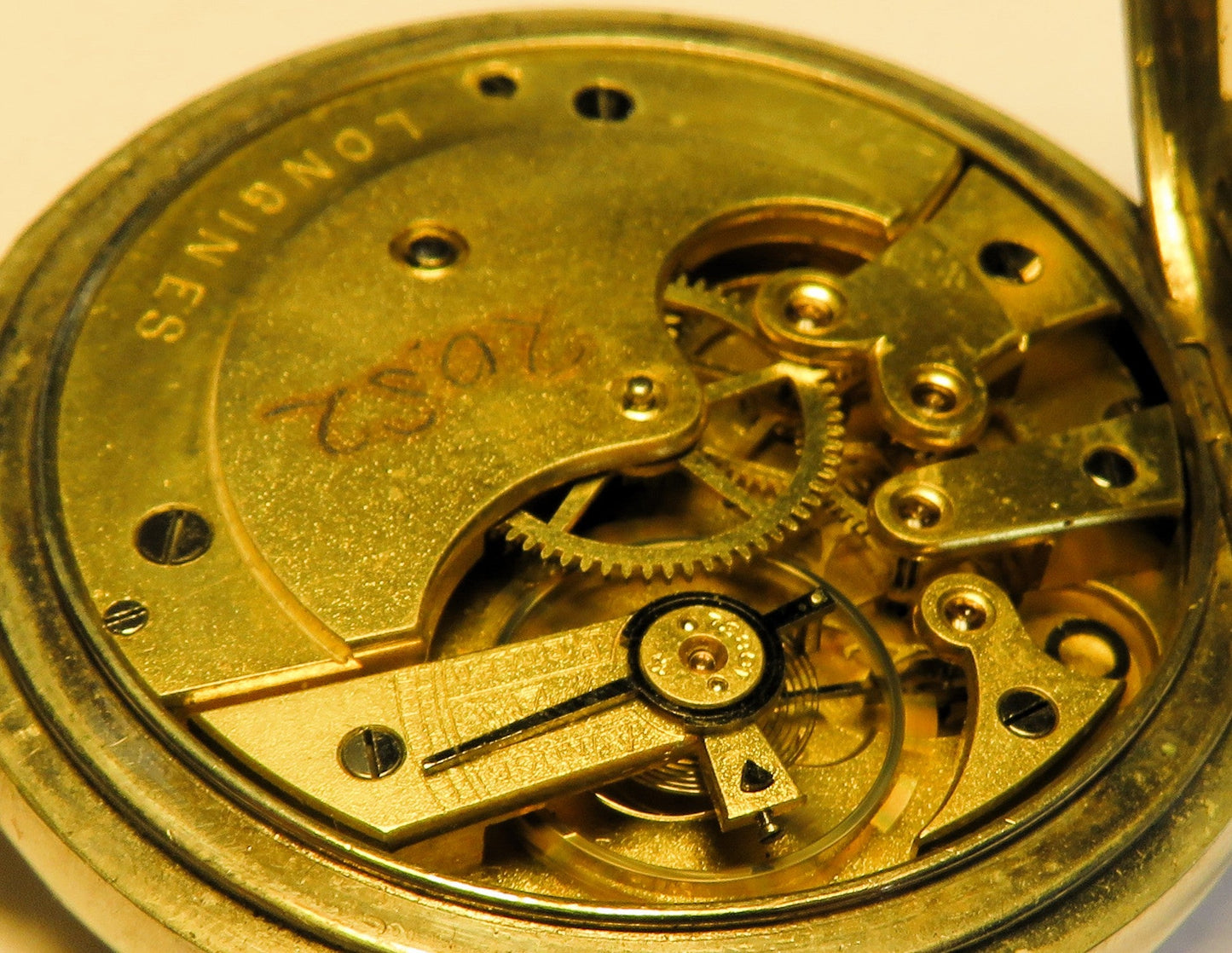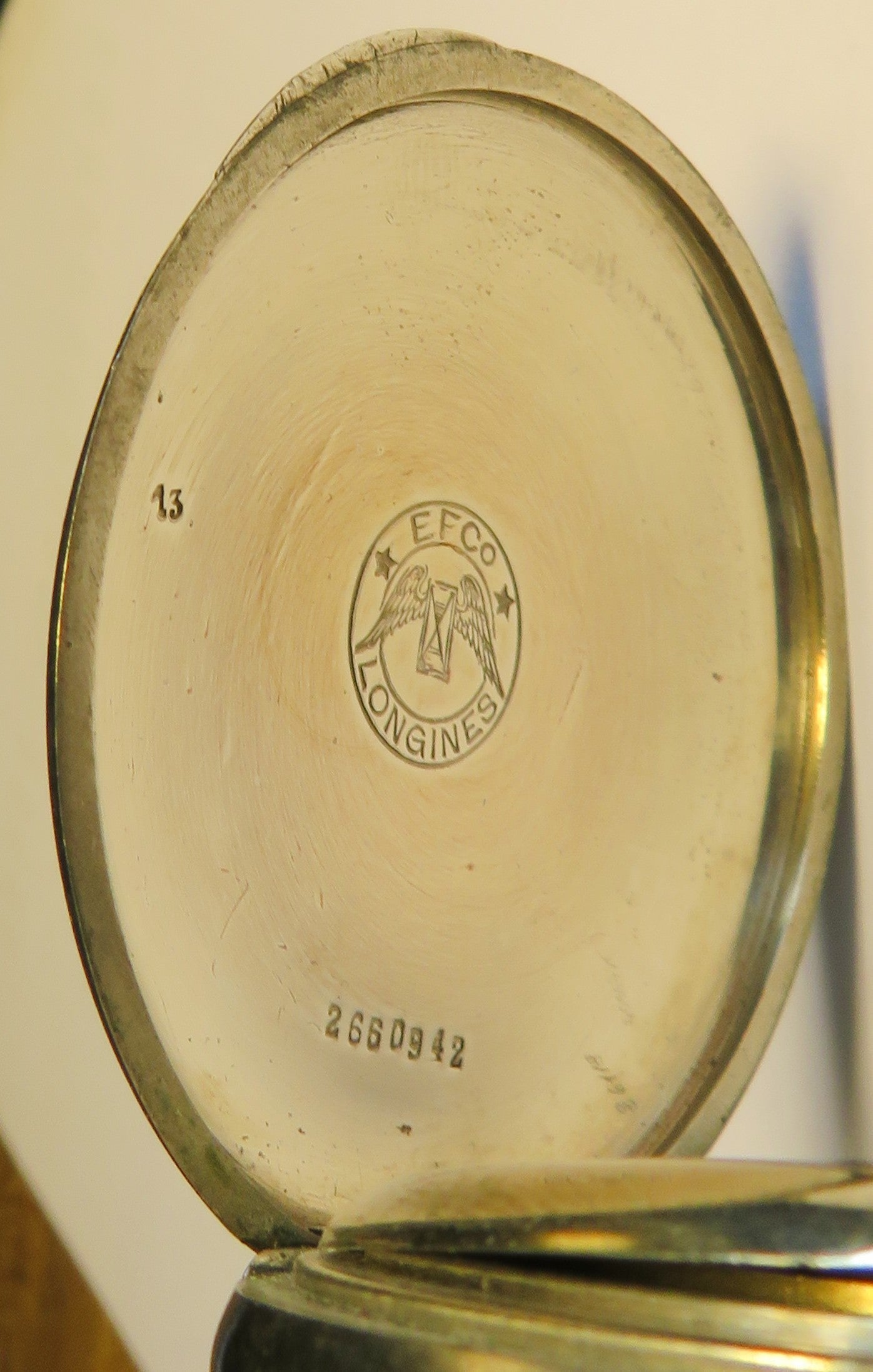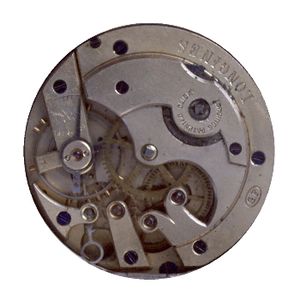Sammler-Uhren
Longines Cal. L 20.52 engraved railwayman's pocket watch chain / coin ca. 1920
Longines Cal. L 20.52 engraved railwayman's pocket watch chain / coin ca. 1920
Couldn't load pickup availability
Original Longines hand-engraved railwayman's pocket watch with chain and coin, circa 1920
Unrestored white dial with Arabic numerals and an internal 24-hour circle typical of the era, a rotating railway minute track and an indirect second hand above the "6"
Solid, blued steel hands in Breguet style, pressed case back with hinge, inner movement protection cover, case diameter as usual for railway watches a mighty 54mm, "Longines" signed precision movement caliber L 20.52
The inside of the lids are hallmarked, signed and engraved, the outer base is engraved with a steam locomotive and presumably the owner's initials.
Attached to the railway clock is a solid chain to which a real silver coin is soldered (for the conductor's buttonhole) (see photos)
The rare piece starts and runs (accuracy not tested)
EZ 2: little noticeable signs of age or wear, dial unrestored top without scratches, lid closes flush, watch runs, movement spotlessly clean
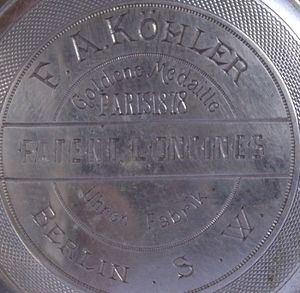
awarded a gold medal at the World Exhibition in Paris in 1878.

>awarded the Grand Prix La Renommee at the World Exhibition in Paris in 1900.
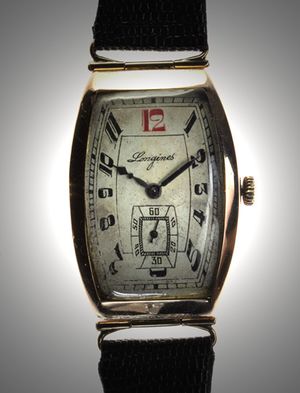
Men's wristwatch from the 1920s.
Swiss watch manufacturer
- Agassiz & Co.
(see also: Agassiz Watch Co. )
On February 25, 1833, Auguste Agassiz founded Raiguel Jeune & Co., a company for the manufacture and distribution of utility watches, in Saint-Imier , Switzerland, together with the watch dealer Henri Raiguel and Florian Morel . After Henri Raiguel's departure in November 1838 , the company operated under the name Agassiz & Co. Agassiz exported Watches to the USA. For example, JA ABRY took over the Agassiz company's commercial agency in New York. After Florian Morel's retirement on December 31, 1846 , Auguste Agassiz became the sole owner of the company. His resilient Agassiz presented watches “in the style of Saint-Imier” at trade fairs throughout Europe and quickly gained a good reputation.
Due to his failing health, Agassiz handed over management of the company to Edouard Savoye in the early 1850s. At Auguste Agassiz 's request, his nephew Ernest Francillon joined the company in mid- 1852 . In 1853 , Ernest Francillon went to Val-de-Travers for a year to familiarize himself with watchmaking and sales. From 1854, he assumed management responsibilities at Agassiz.
Ernest Francillon & Co.
On July 1, 1862, Ernest Francillon took over the Agassiz factory (Agassiz became a limited partner). Soon, more than 20,000 watches (open pocket watches with cylinder and lever escapements, as well as small ladies' watches) were being produced annually. To convert watchmaking to series production, the company decided to build a new watch factory.
E. Francillon, Longines, Suisse
In 1866, Ernest Francillon acquired some land outside the village of Saint-Imier , in the meadows of the Langgewann (Es Longines) district. In 1867, the factory built here, with the active assistance of engineer Jacques David, produced a pocket watch bearing the name "E. Francillon, Longines, Suisse."
In 1873, Jaques David became technical director and limited partner.
In order to protect against counterfeiting, from 1874 onwards the
The winged hourglass is applied to all movements and cases. Exceptions are movements that were signed by the customer on behalf of the customer.
The successful presentation of the watches at the 1878 World's Fair in Paris brought a flood of orders, including from the USA. In the same year, the first chronograph movement, the Longines 20H caliber, was developed. Demand for the Longines 18L open-winding caliber could barely be satisfied. In 1879, the factory was expanded. Jacques David was appointed to the management team. Only movements that were cased in the USA for customs purposes were produced for the American market. From 1885 onward, the sales success of Longines watches in the USA was primarily due to the Wittnauer watch dealership.
In the service of timekeeping
In the following years, Longines revolutionized timekeeping in sports and supported scientific expeditions. Based on his experience with the problem of rapid positioning, American aviation pioneer Charles A. Lindbergh advised Longines on the development of a special wristwatch ( an hour angle watch ) that made longitude determination quick and easy.
In 1945, Longines launched the first self-winding watch. In 1952 , Longines became the Official Timekeeper of the Oslo Winter Olympics. In 1960, the world's thinnest electromagnetic movement of its category was developed. In 1961, Longines acquired a majority stake in Record Watch , thus becoming the owner of the company. In 1967, the "Ultra-Chron" model was launched, a high-precision automatic wristwatch with 36,000 vibrations per hour. In 1969, the "Ultra-Quartz" was introduced.
Part of the Swatch Group
With the advent of quartz watches , the company, like many other watch manufacturers, encountered financial difficulties in the early 1980s. Longines was subsequently integrated into the SMH Group, at the time the largest Swiss watch manufacturer, which in turn was absorbed into the Swatch Group , now the world's largest watch company. The current model range includes both classics with mechanical movements, such as the Longines Lindbergh , and quartz watches.
In 2007 , as a tribute to the first true pilot's watch in watch history, the Longines Weems navigation watch (then the forerunner of the Longines Lindbergh ), a model called the Longines Weems Second-Setting Watch was released.
